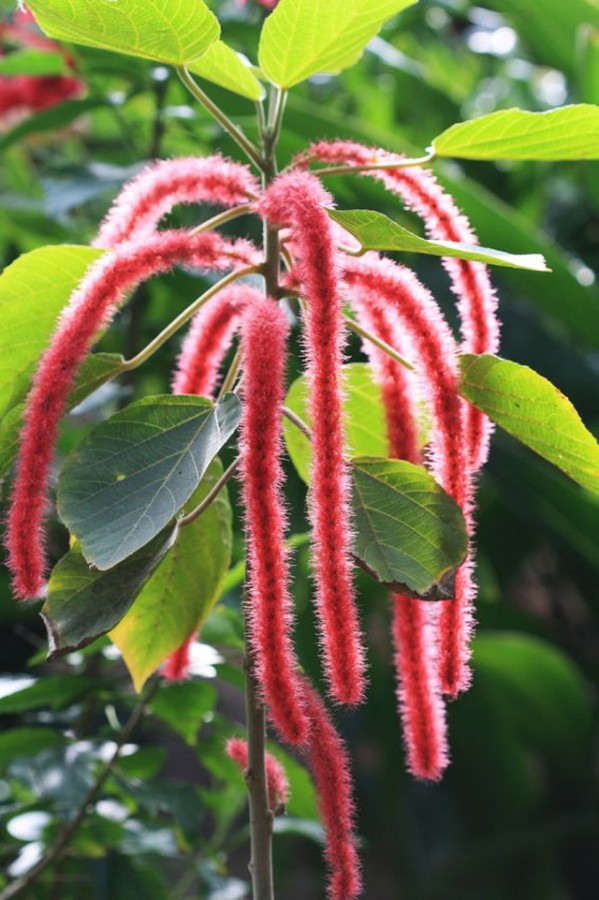
Chenille is one of the many fibers available for rug-making. The word ‘chenille’ is the French word for caterpillar, which refers to its manufacturing process. Chenille can refer to either a type of yarn or the fabric made from chenille yarn. In the case of rugs, chenille refers to the yarn fibers.
Texture
Chenille rugs can be braided, like wool or cotton braided rugs, or tufted and plush. Chenille can have twisted and long fibers, similar to shag floor coverings. The fibers can be much shorter, similar to densely textured polypropylene. Chenille is not just a yarn for rug-making, but can also be used to make bedspreads and other household items.
It’s the chenille manufacturing process that gives this yarn its distinctive look and feel. Shorter lengths of yarn placed between two longer pieces of yarn, like a yarn sandwich. Then all of the fibers are twisted together. Chenille gets its lovely soft texture from how the yarn fibers are twisted together, and it also changes color as the light hits it from different directions.
Is chenille cotton? Some of them are, but chenille yarns can be made from acrylic, rayon, or olefin. Acrylic, rayon, and olefin are three synthetic fibers, while cotton is a natural fiber. Acrylic is a plastic fiber. Rayon is also known as viscose. Olefin is another form of a polypropylene rug.
Colors and Patterns
Chenille can come in as many colors and patterns as wool rugs. You can purchase solid color chenille, patterned chenille, or braided chenille, which are available in solid or variegated colors. Pastels and lighter colors are suited for rooms with low-traffic areas, since these colors can show dirt and mud more easily. These colors include pink, baby blue, lavender, pale yellow, and peach. Pastels are also a pretty choice for baby nurseries and bathrooms. Darker colors, like deep red, navy blue, pine green, black, and chocolate brown, are best for high-traffic areas. Use these colors in your living rooms, dining rooms, and kitchens. Due to the versatility Chenille colors available, you can find modern patterns, traditional florals, or any other kind of pattern you can think of! You can certainly find one to fit in any room in your home.
Cleaning and Care
They will require different care and cleaning methods depending on how they were manufactured. Cotton, acrylic, rayon, and olefin are the four major fibers. For cotton, immediately clean up any spills and shake it to get rid of any dirt. If it is small enough, put it in the washer, but read if that is allowed on rug’s label first. You can wash cotton floor rugs on a gentle setting with mild soap. Rinse thoroughly and dry completely. It’s best to dry them on a sunny day, to let the sun disinfect them completely. The sun will dry the chenille yarns.
Acrylic chenille will have care instructions on the label, so follow those to make sure you’re cleaning them properly. As a general rule of thumb, however, acrylic tends to be brittle and break down after frequent use. So, you will need to vacuum it more frequently than a cotton chenille rug. It is also synthetic and should not come into contact with heat. When deep cleaning, use a quality machine cleaning formula and dry it completely. Do not put it into a dryer, since the heat may damage the fibers.
Rayon, or viscose, is another synthetic fiber. Its colors have a tendency to bleed, so test all cleaning methods on a small patch first before the entire rug. Rayon can shrink, so do not use water-based cleaning methods. Choose a dry foam carpet cleaning method instead.
Olefin is made of polypropylene, which is a durable synthetic fiber. They can be cleaned rigorously. Olefin resists stains, so they are easy to keep clean. Simply keep them looking their best with a regular cleaning.
Chenille floor coverings are an excellent choice for your home. They come in a wide variety of colors and patterns, and due to their yarn fibers, are less expensive than wool rugs. Take care of your chenille rugs properly and they will provide you with beauty and durability for many years.